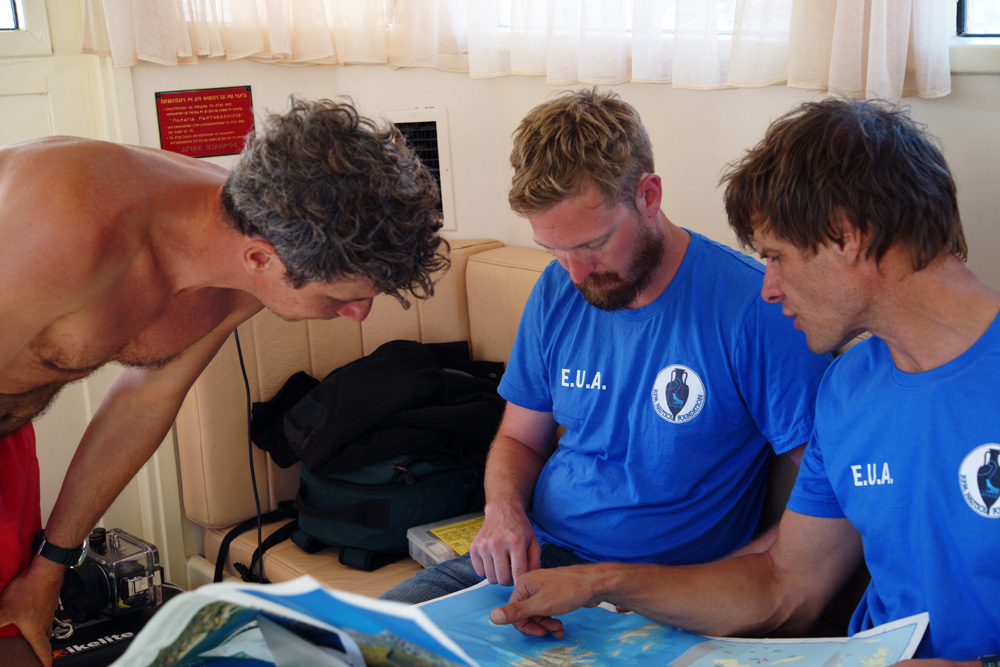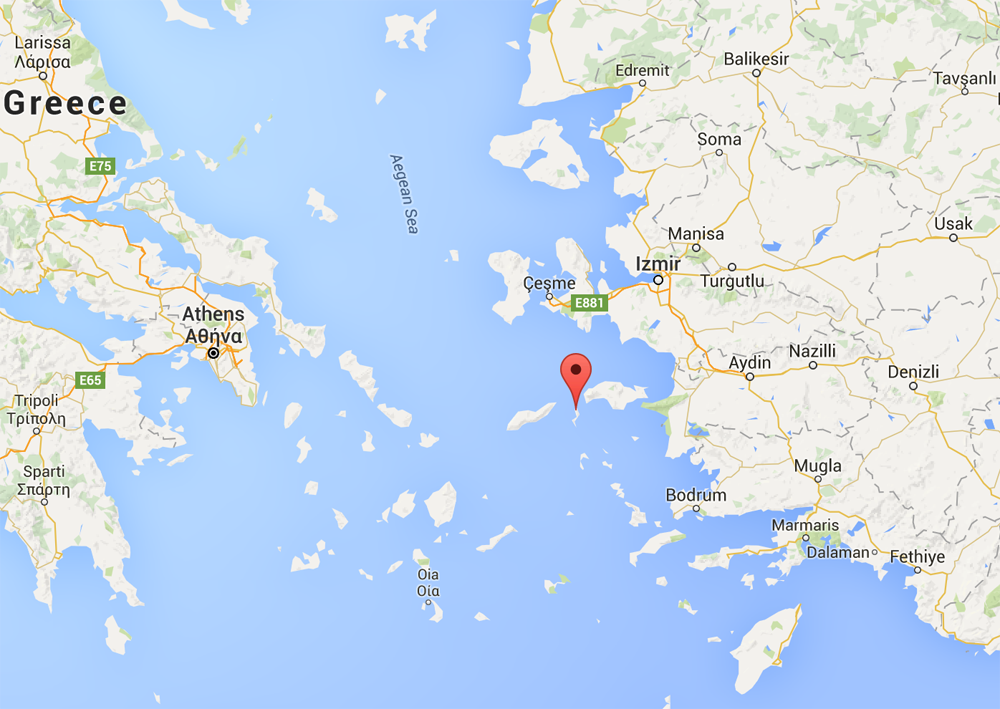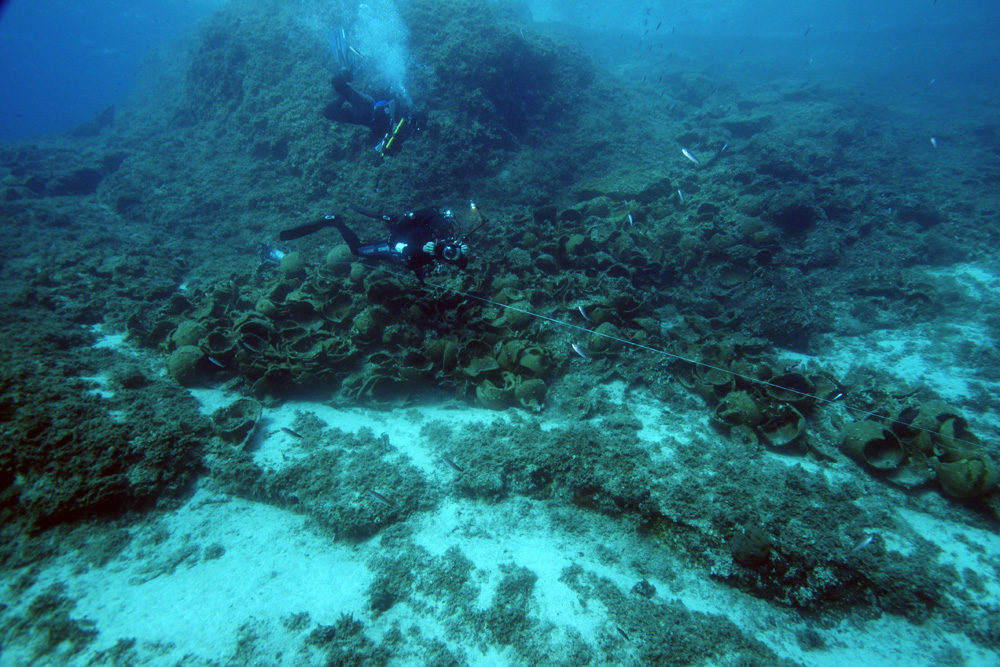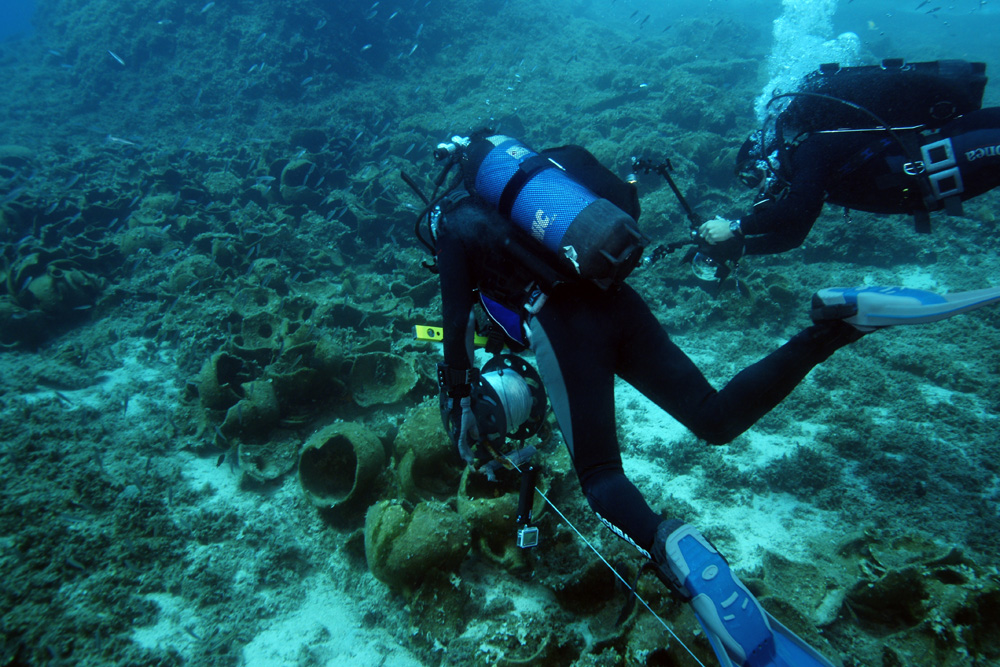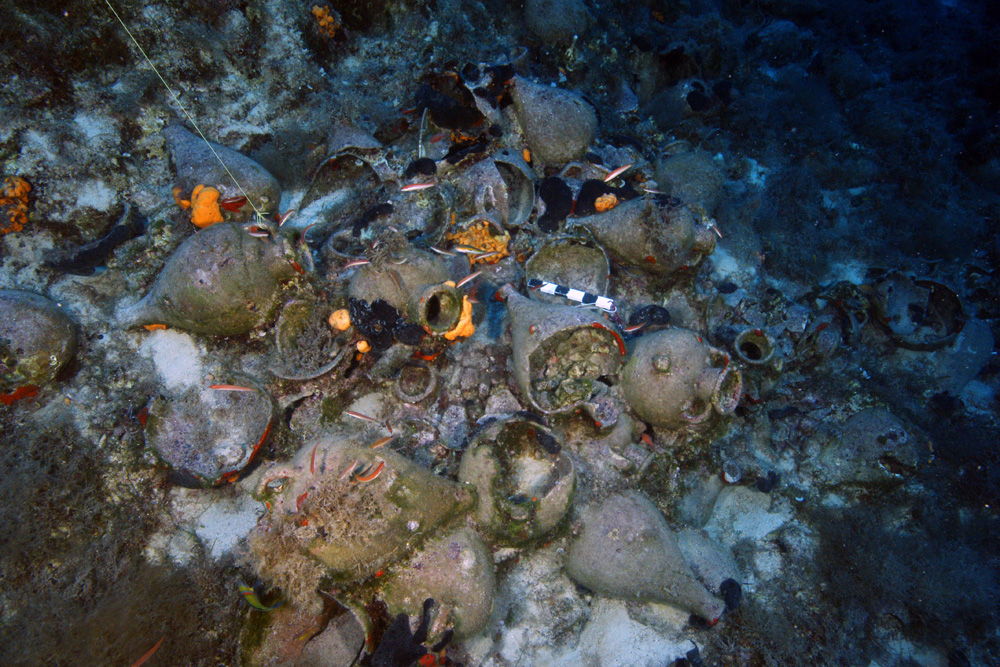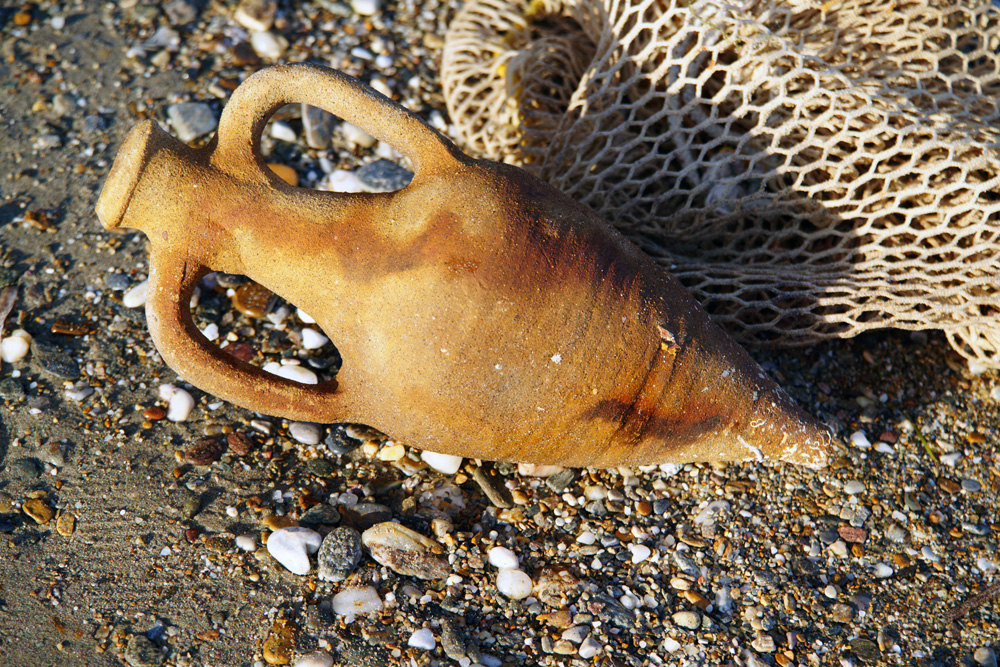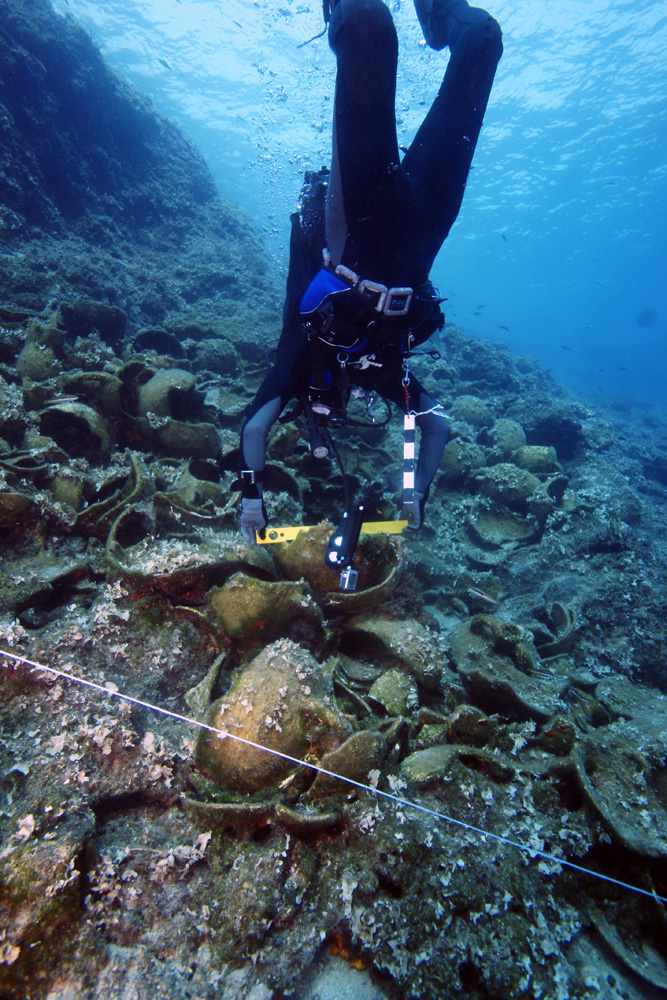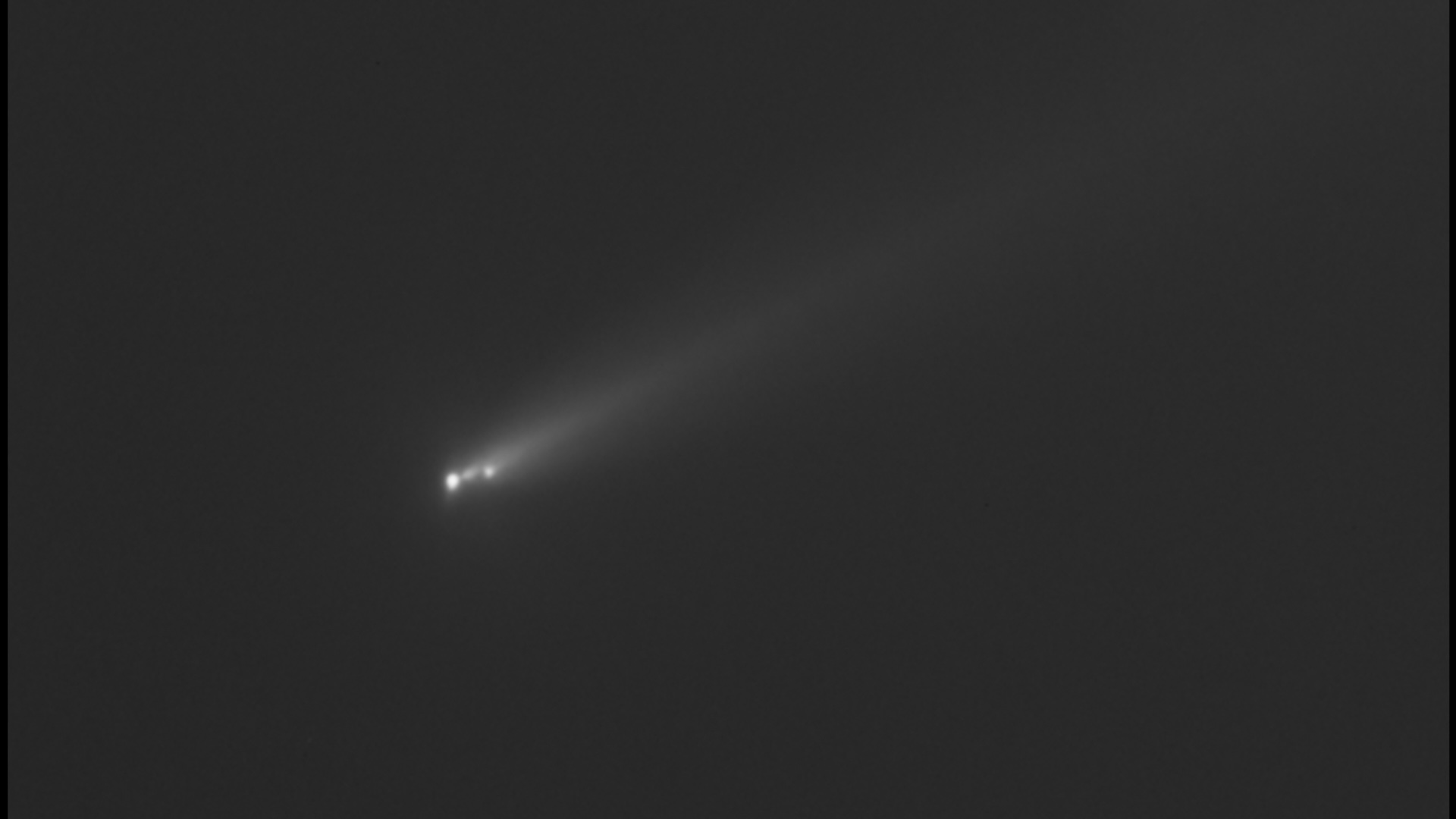In Photos: Amazing Shipwrecks Discovered Around Greek Archipelago
Over the course of just two weeks in September, a team of underwater archaeologists located 22 shipwrecks around the Greek archipelago of Fourni. The sunken vessels had never been documented before, and the project leaders say the concentration of wrecks is unprecedented in Greek waters. [Read full story on the Greek shipwrecks.]
Unexpected success
The survey was led by George Koutsouflakis (right), of the Greek Ephorate of Underwater Antiquities, and Peter Campbell (center), of the RPM Nautical Foundation. They said they would have considered the expedition highly successful if they found three to five wrecks. They were surprised to discover evidence of nearly two dozen doomed vessels. (Photo Credit: V. Mentogianis)
Navigational center
Fourni (marked by the red pin) is an archipelago made up of 13 islands and islets between the larger Greek islands of Samos and Icaria. It was important as a navigation point in the ancient world. Many sailors crossing the Aegean Sea, along both east-west and north-south routes, would have passed it.
History galore
The wrecks found in the recent survey date from the Archaic period (700-480 B.C.) though the late Medieval period (16th century), though half are from the late Roman period (300-600 A.D.). (Photo Credit: V. Mentogianis)
Get the world’s most fascinating discoveries delivered straight to your inbox.
Close to home
The wrecks discovered so far are relatively close to shore, and they were largely discovered based on tips from local fishermen and sponge divers. (Photo Credit: V. Mentogianis)
Ancient wreckage
While little remains of the vessels themselves, the shipwrecks can be identified by their lost cargo. In most cases, that means big messy piles of ceramic vessels that would have been used to transport goods like wine and oil. (Photo Credit: V. Mentogianis)
Ancient delivery containers
This small amphora would have been used to deliver luxury goods in the Mediterranean. (Photo Credit: V. Mentogianis)
Samples for research
While the archaeologists did not excavate any portion of the wreck sites, they did raise sample artifacts, like this amphora, from each site for lab analysis. (Photo Credit: V. Mentogianis)
Future examination
The team created 3D plans of each site using photogrammetry. Here, an archaeologist prepares a level on one of the wrecks. (Photo Credit: V. Mentogianis)
Follow Live Science @livescience, Facebook & Google+.

